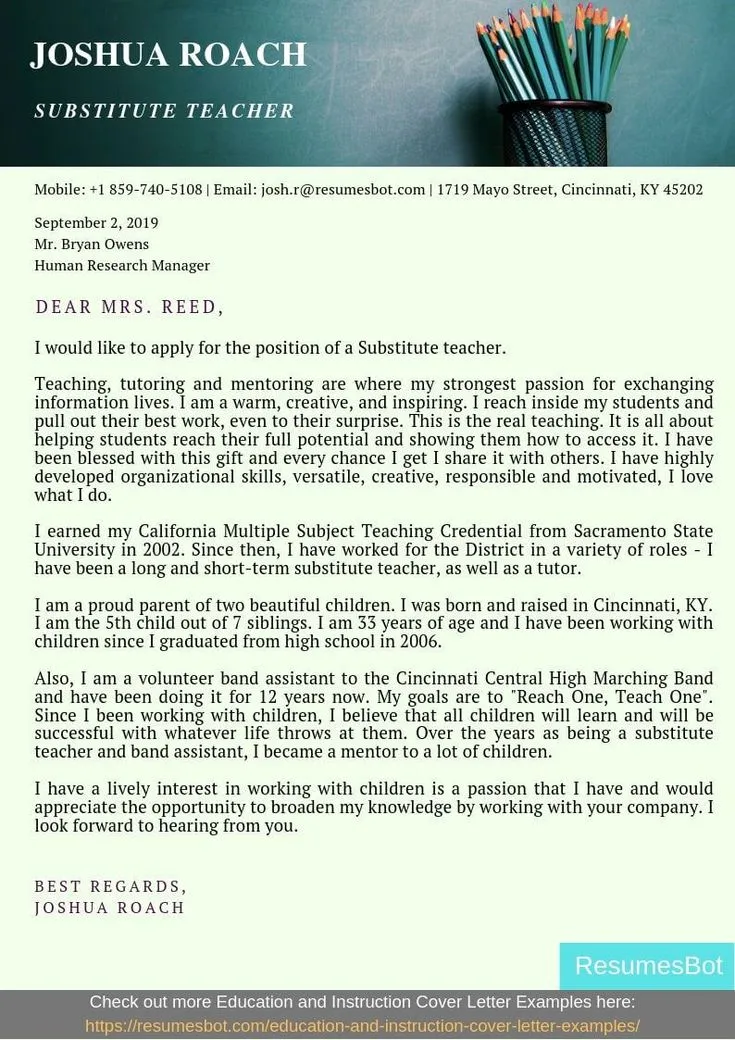What is a Cover Letter?
A cover letter is a crucial document accompanying your resume when applying for a job. It serves as your initial introduction to a potential employer, providing a personalized narrative that expands upon the information presented in your resume. Unlike the concise nature of a resume, a cover letter allows you to articulate your interest in the specific position, highlight relevant skills and experiences, and explain why you are the ideal candidate for the job. It’s your opportunity to make a strong first impression and demonstrate your communication skills and professionalism. The cover letter should be viewed as a persuasive marketing tool that showcases your unique value proposition to the hiring manager.
Why Cover Letters are Important
Cover letters play a significant role in the hiring process. They provide context for your resume, helping employers understand how your skills and experiences align with the specific requirements of the job. They demonstrate your communication abilities, which is essential for many roles. Cover letters can also showcase your enthusiasm for the position and the company, setting you apart from other applicants. Many employers use cover letters to assess a candidate’s writing skills, attention to detail, and ability to follow instructions. A well-crafted cover letter significantly increases your chances of getting an interview and ultimately landing the job. Neglecting this step can be a missed opportunity to make a memorable first impression.
Cover Letter Secrets
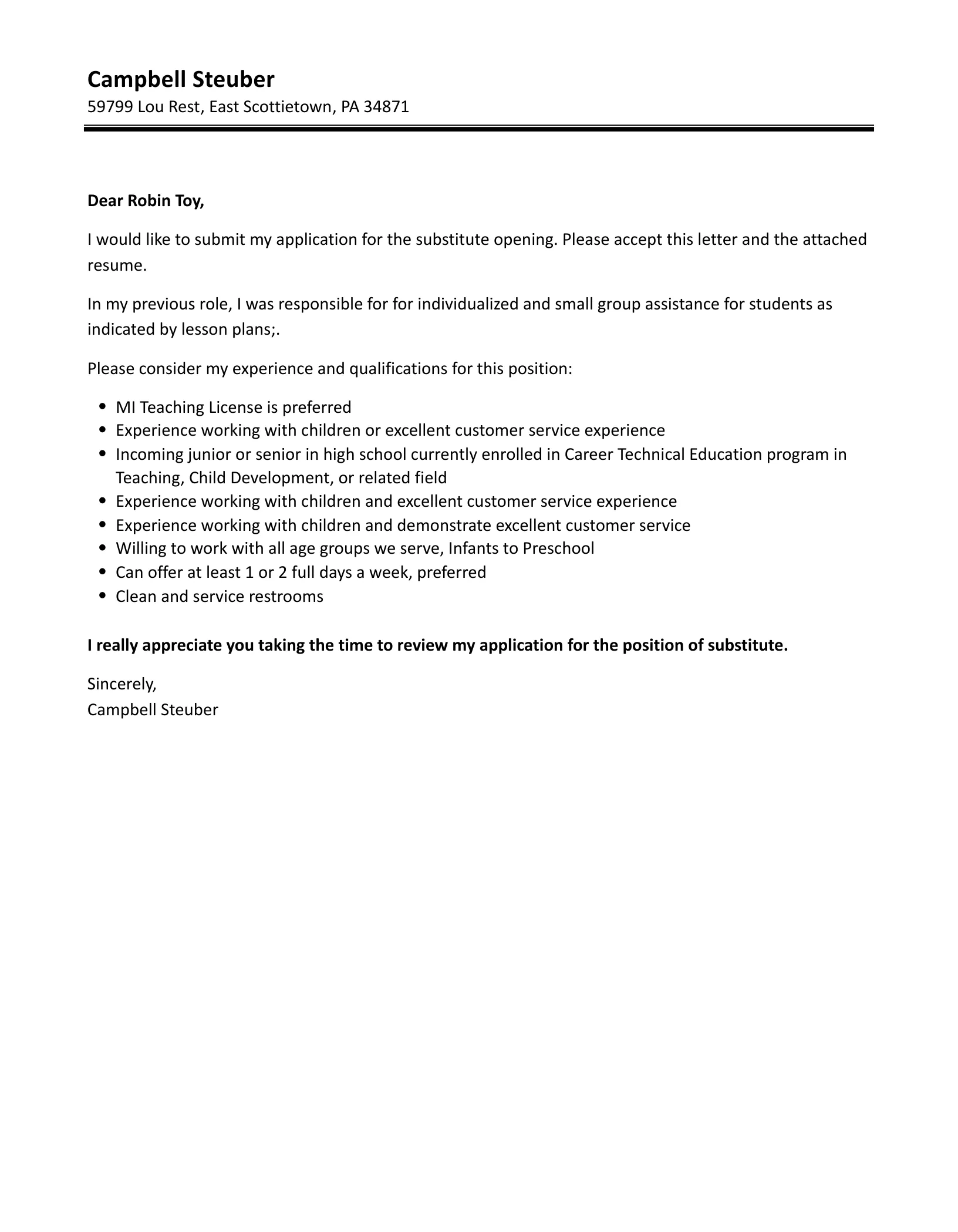
Unlocking the secrets to an effective cover letter involves several key strategies. First, tailor your cover letter to each specific job application. Avoid using a generic template; instead, customize the content to reflect the requirements and the company’s culture. Research the company and hiring manager to personalize your letter further. Emphasize your relevant skills and experience by using action verbs and quantifying your achievements whenever possible. Proofread meticulously for any errors in grammar or spelling. By incorporating these elements, you can create a compelling cover letter that captures the reader’s attention and increases your chances of securing an interview.
Highlighting Your Skills and Experience
When highlighting your skills and experience, focus on the qualifications that are most relevant to the job description. Review the job posting carefully and identify the key skills and experiences the employer is seeking. Then, in your cover letter, provide specific examples of how you have demonstrated these skills in previous roles. Use the STAR method (Situation, Task, Action, Result) to illustrate your accomplishments. For example, describe a situation you encountered, the task you were assigned, the actions you took, and the positive results you achieved. By providing concrete examples, you make your claims more credible and persuasive. It’s important to use keywords from the job description to ensure your application is easily scanned by applicant tracking systems.
Tailoring Your Cover Letter to the Job
Tailoring your cover letter to the specific job is crucial for demonstrating your genuine interest and suitability for the role. Begin by carefully analyzing the job description to identify the required skills, qualifications, and responsibilities. Then, adjust your cover letter to align your experiences and skills with these specific requirements. Highlight the experiences that demonstrate how you can contribute to the company’s goals. Refer to specific projects, tasks, or accomplishments that match the job’s expectations. By customizing your cover letter, you show the hiring manager that you have taken the time to understand the role and are genuinely interested in the opportunity. A tailored cover letter is more likely to capture attention and leave a lasting impression.
Researching the Company
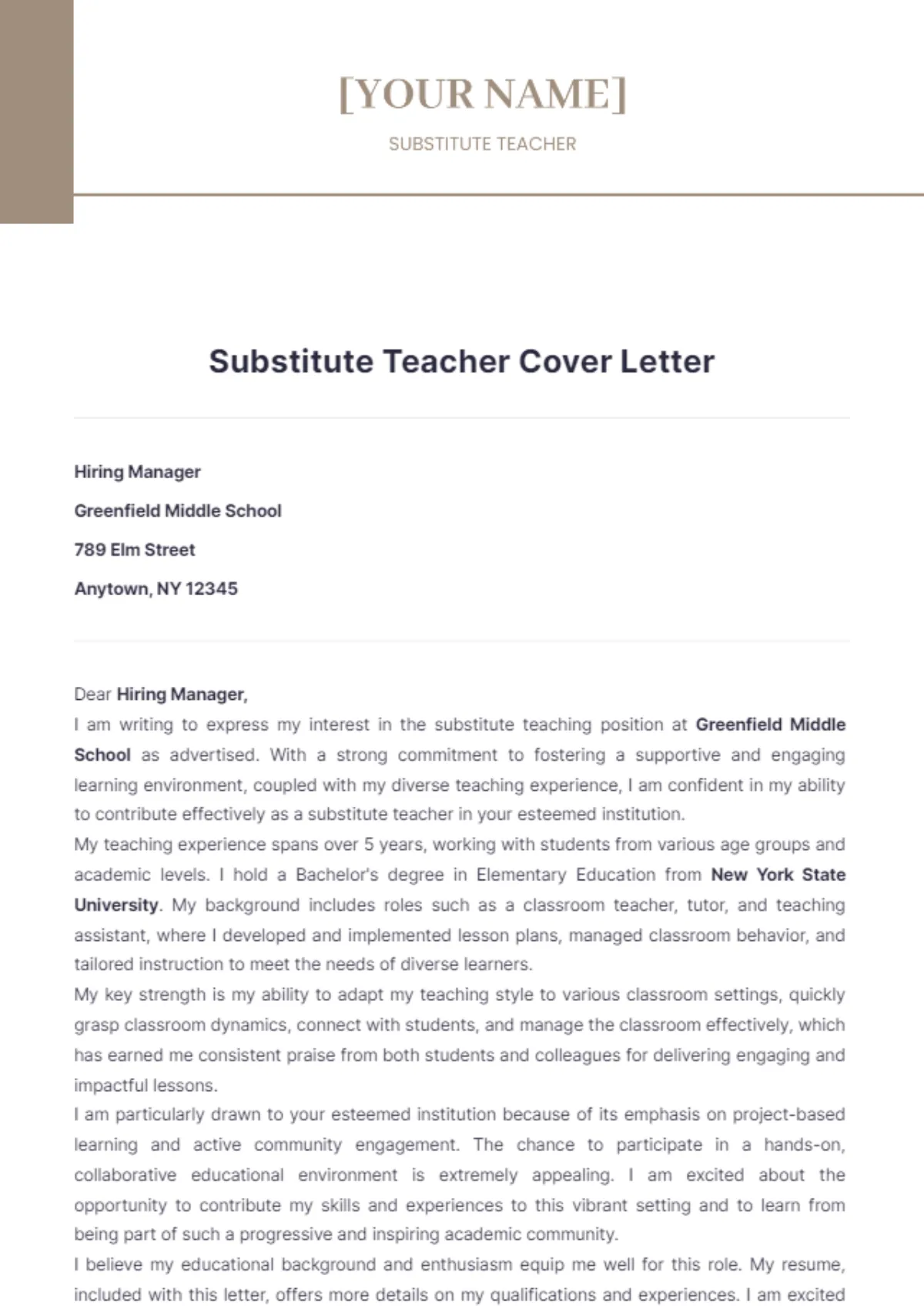
Thoroughly researching the company is a vital step in crafting a compelling cover letter. Understanding the company’s mission, values, products, services, and recent news allows you to demonstrate your genuine interest and tailor your letter effectively. Visit the company’s website, read articles about the company, and check their social media presence. This research provides valuable insights into their culture, goals, and challenges. Incorporate this information into your cover letter to show how your skills and experiences align with their specific needs and how you can contribute to their success. Mentioning specific projects, initiatives, or values that resonate with you demonstrates that you have taken the initiative to learn more about the organization. This level of detail sets you apart and demonstrates a serious interest in the opportunity.
Using Action Verbs and Keywords
Incorporating action verbs and relevant keywords is essential for creating a dynamic and SEO-friendly cover letter. Action verbs such as “managed”, “led”, “developed”, “achieved”, and “implemented” help to make your experiences and accomplishments more impactful. They paint a vivid picture of your capabilities and skills. Keywords, on the other hand, are specific terms and phrases used in the job description that employers use to find qualified candidates. By strategically incorporating these keywords into your cover letter, you increase the chances of your application being noticed by applicant tracking systems and hiring managers. Ensure that you use the keywords naturally within the context of your sentences, and avoid keyword stuffing, which can make your cover letter sound unnatural and less effective. Using the right language boosts the impact and searchability of your letter.
Quantifying Your Achievements
Quantifying your achievements is a powerful technique to demonstrate the impact of your work. Instead of making vague claims about your skills or accomplishments, use numbers, percentages, or statistics to illustrate your contributions. For example, instead of saying you ‘improved customer service,’ say you ‘increased customer satisfaction scores by 15%’. Quantifiable achievements provide concrete evidence of your abilities and help employers understand the value you can bring to their organization. Use data to showcase how you have saved costs, increased revenue, improved efficiency, or exceeded expectations in previous roles. This approach adds credibility to your claims and helps you stand out from other applicants. Using numbers is one of the most effective ways to strengthen your cover letter.
Formatting Your Cover Letter
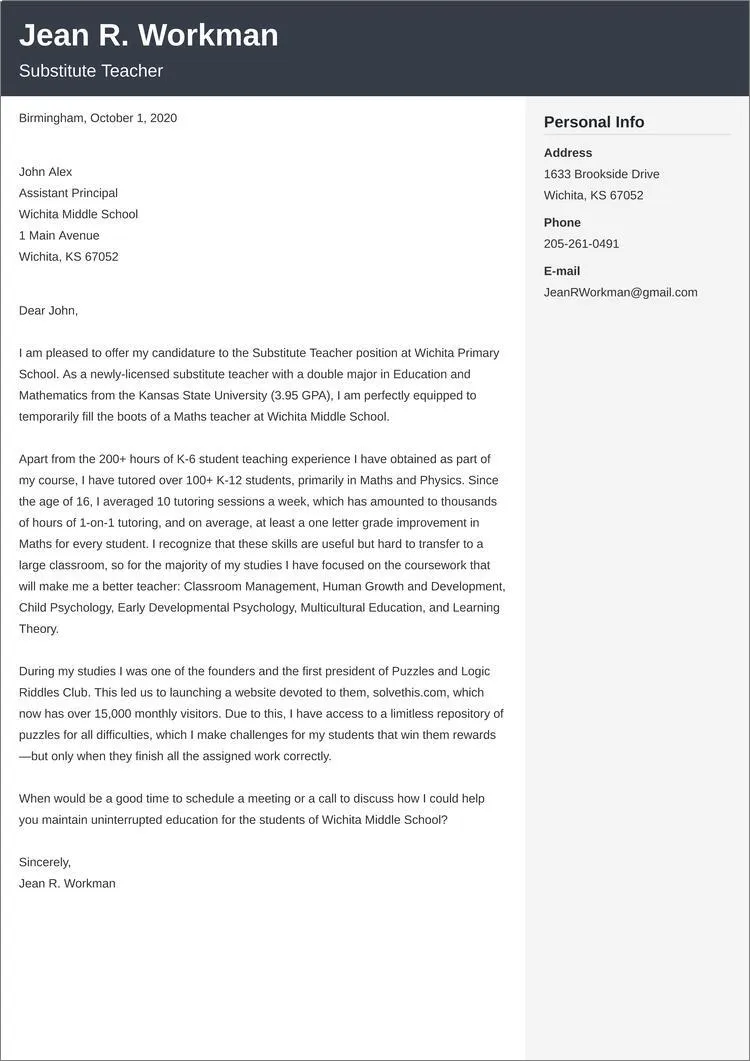
Proper formatting is critical for making your cover letter easy to read and visually appealing. Choose a professional font, such as Times New Roman, Arial, or Calibri, and maintain a consistent font size throughout the document. Use clear headings, bullet points, and white space to organize the content and make it easy for the reader to scan. Ensure the letter is well-structured with an opening paragraph that grabs the reader’s attention, a body that highlights your relevant skills and experiences, and a concluding paragraph that expresses your interest and next steps. Proofread your cover letter carefully to eliminate any errors in grammar or spelling. A well-formatted cover letter conveys professionalism and attention to detail, setting a positive tone from the start.
Choosing the Right Font and Layout
Selecting the right font and layout is fundamental for creating a cover letter that is both professional and easy to read. Opt for a clear and classic font such as Times New Roman, Arial, or Calibri, with a font size between 10 and 12 points. These fonts are widely recognized and are considered to be very readable. Maintain consistent formatting throughout the document, including consistent line spacing and margins. Use a single-spaced format with a blank line between each paragraph. A clean and uncluttered layout makes your cover letter more visually appealing and helps the reader focus on the content. Avoid using fancy or overly stylized fonts, as they can distract from your message and make your cover letter look unprofessional. Good formatting enhances readability and leaves a positive impression.
Writing a Compelling Opening
The opening paragraph of your cover letter is your first opportunity to capture the reader’s attention and make a positive impression. Start with a strong hook that grabs the reader’s interest immediately. Avoid generic greetings like ‘Dear Sir/Madam’. Instead, try to address the hiring manager by name if possible. In the opening paragraph, state the specific position you are applying for and how you learned about the opportunity. Briefly explain why you are interested in the role and what makes you a strong candidate. Highlight one or two key skills or experiences that align with the job requirements. A compelling opening sets the tone for your entire cover letter, encouraging the reader to continue and learn more about your qualifications and enthusiasm. Focus on making that first impression count.
Grabbing the Reader’s Attention
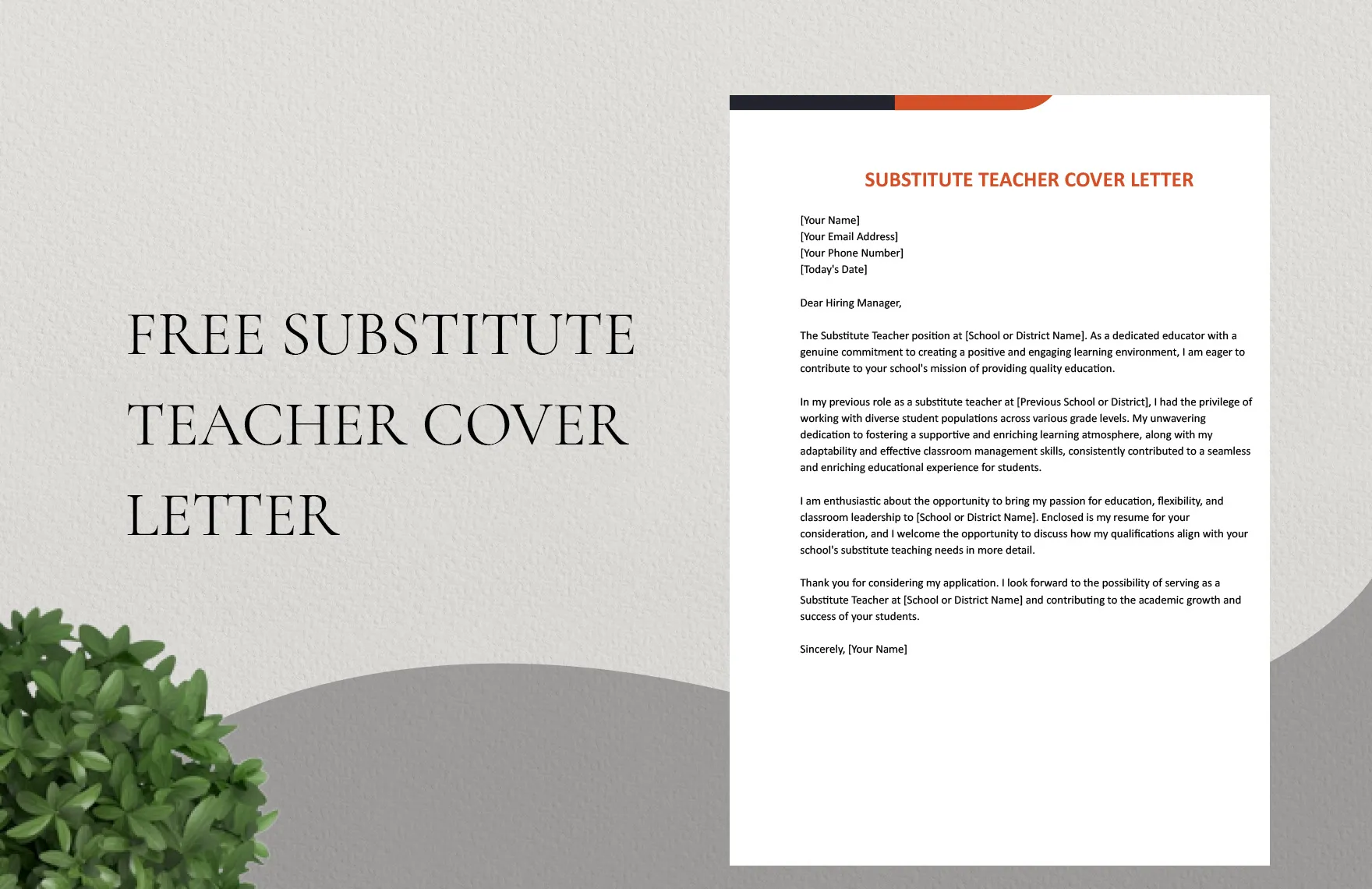
Grabbing the reader’s attention from the start is essential for making your cover letter stand out. To capture the reader’s interest, consider these strategies: Start with a strong opening that immediately demonstrates your value. Mention a specific achievement or accomplishment that is relevant to the job. Express your enthusiasm for the role and the company. If possible, personalize your letter by mentioning something specific that caught your attention about the job description or the company. Use action verbs to create a sense of energy and dynamism. Show genuine interest in the opportunity and highlight your passion for the field. A captivating opening is the foundation for a compelling cover letter that keeps the hiring manager engaged and encourages them to read on. Your goal is to make them want to learn more about you.
Crafting a Strong Body
The body of your cover letter should provide detailed information about your skills, experiences, and accomplishments. This is where you showcase your qualifications and demonstrate how they align with the job requirements. Structure the body of your letter into several well-organized paragraphs. Start each paragraph with a clear topic sentence that summarizes the main point. Provide specific examples to support your claims, using the STAR method to illustrate your accomplishments. Focus on the most relevant skills and experiences that are mentioned in the job description. Quantify your achievements whenever possible to show the impact of your work. The body of your cover letter is your opportunity to persuade the hiring manager that you are the best candidate for the role. Be concise, focused, and persuasive.
Showcasing Your Qualifications
Effectively showcasing your qualifications involves carefully aligning your skills and experience with the requirements of the job. Start by reviewing the job description and identifying the key skills and qualifications the employer is seeking. Then, in your cover letter, provide specific examples of how you have demonstrated those skills and experiences in previous roles. Use the STAR method to provide context and illustrate your accomplishments. Quantify your achievements whenever possible, using numbers and statistics to demonstrate the impact of your work. Highlight your relevant experiences, focusing on the most recent and relevant achievements. Clearly articulate how your qualifications align with the job requirements and how you can contribute to the company’s success. Be clear, concise, and provide solid evidence to back up your claims.
Demonstrating Your Enthusiasm
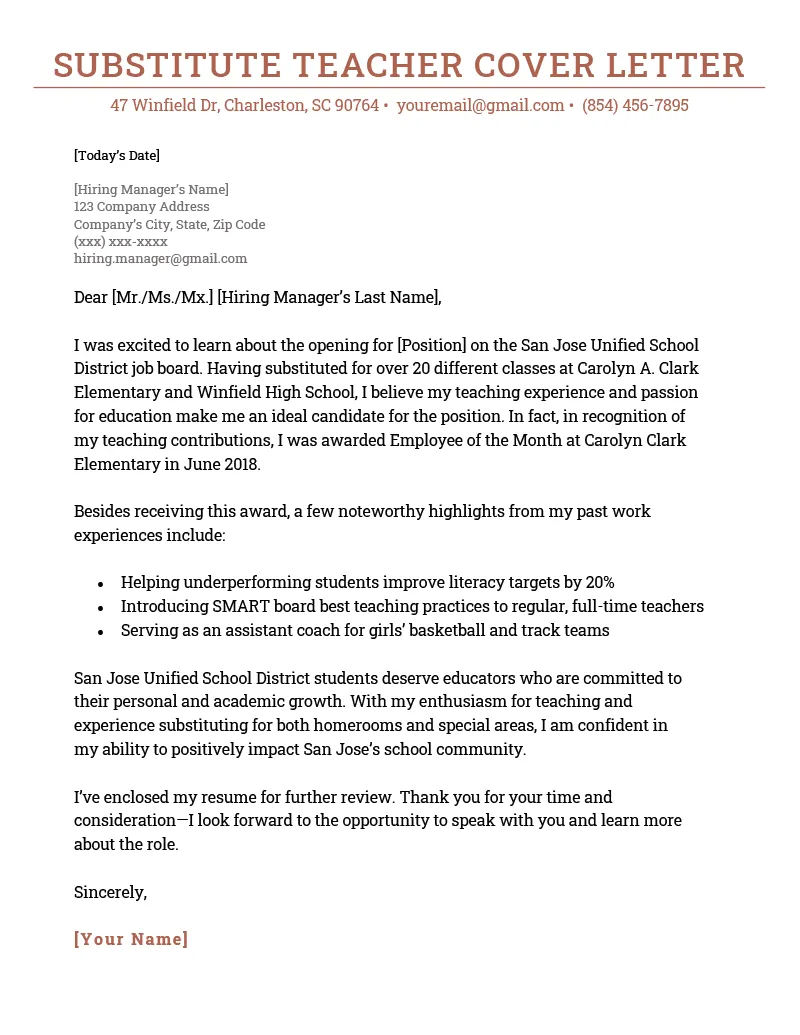
Demonstrating your enthusiasm for the role and the company is critical for making a positive impression on the hiring manager. Express your excitement for the opportunity and explain why you are interested in the specific position. Mention the company’s mission, values, products, or services that resonate with you. Show that you have researched the company and understand their goals. Highlight how your skills and experiences align with their needs and how you can contribute to their success. Use positive and energetic language throughout your cover letter. Avoid sounding generic or like you are simply sending out a template. Demonstrating genuine enthusiasm shows that you are passionate about the role and eager to join the company. This genuine interest often makes you stand out to employers.
Concluding Your Cover Letter
The conclusion of your cover letter should leave a lasting impression and outline your next steps. Reiterate your interest in the position and summarize why you are the ideal candidate. Thank the reader for their time and consideration. Express your eagerness to learn more about the opportunity and state your availability for an interview. Provide your contact information, including your email address and phone number, and state that your resume is attached for their review. Use a professional closing, such as “Sincerely” or “Best regards”. A well-crafted conclusion leaves the reader with a positive final impression, encouraging them to contact you and move forward in the hiring process. Ensure that this final message is clear, concise, and professional.
Expressing Gratitude and Next Steps
Expressing gratitude and outlining the next steps are essential elements of a professional cover letter conclusion. Thank the hiring manager for their time and consideration, showing your appreciation for the opportunity. Reiterate your enthusiasm for the role and the company. State your availability for an interview and mention that you look forward to hearing from them soon. Provide your contact information, including your email address and phone number. You can also mention that you are available for a call at their convenience. A concise and professional conclusion conveys your positive attitude and makes it easy for the hiring manager to take the next steps. Expressing gratitude leaves a positive impression and demonstrates respect for the reader’s time. This final section wraps up your letter and makes it clear how you are ready to take the next step in the process.
Proofreading and Editing
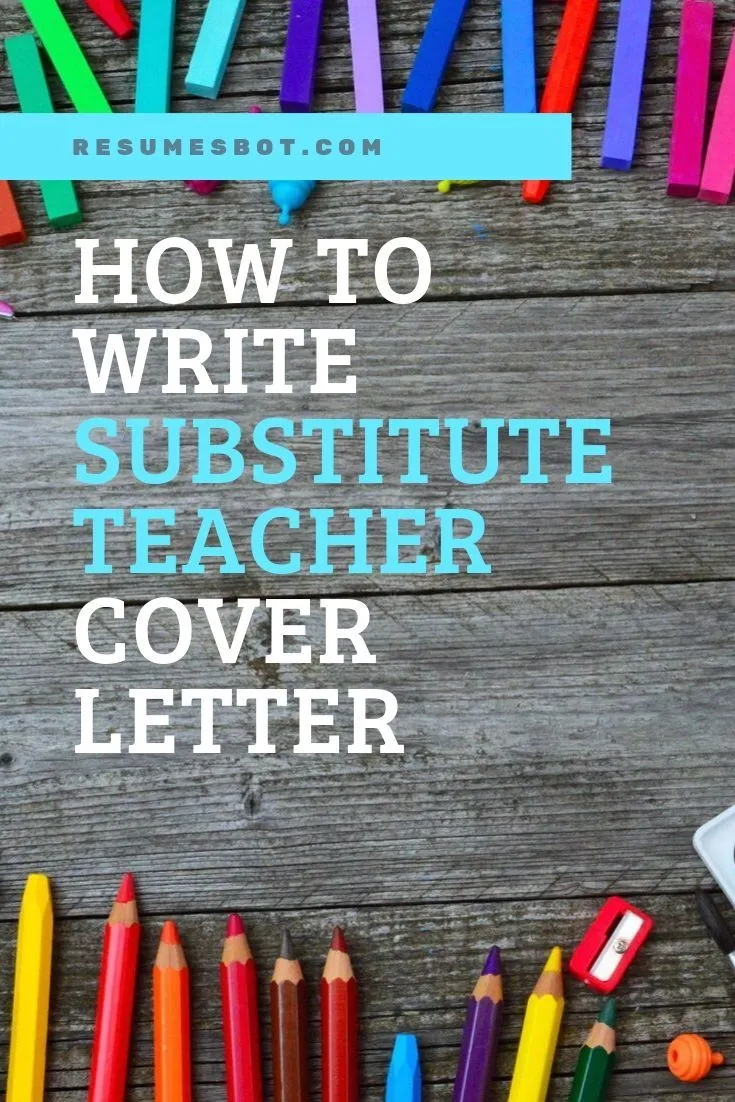
Thorough proofreading and editing are essential steps to ensure your cover letter is polished and error-free. Errors in grammar, spelling, and punctuation can undermine your credibility and create a negative impression. Before submitting your cover letter, carefully review the entire document for any mistakes. Read your cover letter aloud to catch any awkward phrasing or sentences that may not flow well. Have someone else review your cover letter to get a fresh perspective and identify any errors you may have missed. Pay close attention to details such as the correct spelling of the company name and the hiring manager’s name. A well-proofread and edited cover letter demonstrates professionalism and attention to detail, which are essential qualities for any job. Ensure your letter is perfect before sending it out to potential employers.
Avoiding Common Mistakes
Avoiding common mistakes is critical for creating an effective cover letter. One of the most significant errors is sending a generic cover letter instead of tailoring it to the specific job. Avoid using clichés and overly formal language. Do not include information that is already in your resume; your cover letter should add value by providing additional context and details. Another common mistake is neglecting to proofread your cover letter. Typos and grammatical errors can make you look unprofessional. Finally, do not make any negative statements about your previous employers or jobs. Always focus on the positive aspects of your skills, experience, and career aspirations. Avoiding these mistakes will help you create a cover letter that stands out and increases your chances of getting hired.
Common Cover Letter Errors
Identifying and avoiding common cover letter errors is essential for making a positive impression. One frequent mistake is using generic greetings. Always address the hiring manager by name, if possible, instead of using a generic greeting. Poor formatting is another common error. Ensure your cover letter has a clean, professional layout with a consistent font and clear headings. Grammatical errors and typos can also damage your credibility. Proofread your cover letter meticulously to eliminate any mistakes. Finally, do not use an overly long or verbose writing style. Keep your cover letter concise and to the point, focusing on your key qualifications and experiences. By avoiding these common mistakes, you can significantly enhance the effectiveness of your cover letter.
Getting Hired with Your Cover Letter
Your cover letter is a tool for getting hired, and its effectiveness can be amplified by careful planning and execution. Tailor each cover letter to match the job requirements and company culture. Highlight relevant skills and experiences and quantify your achievements to demonstrate your value. Proofread your cover letter meticulously to ensure it is free from errors. Use action verbs and keywords from the job description. Express your enthusiasm for the opportunity and your interest in the company. Make sure your contact information is easy to find. A well-written cover letter can significantly increase your chances of getting an interview and ultimately landing the job. By following these guidelines, you can create a cover letter that makes you stand out and grabs the attention of the hiring manager.
Submitting Your Cover Letter
When submitting your cover letter, always follow the employer’s instructions carefully. Pay attention to the preferred format for submission, which could be a PDF, Word document, or text in the body of an email. Make sure your cover letter is properly formatted and easy to read. If you are submitting your cover letter via email, include a clear subject line that references the job title and your name. Attach your cover letter and resume to the email. Proofread your email and all attachments before sending to make sure there are no mistakes. Following the employer’s instructions shows your attention to detail and professionalism. By submitting your cover letter correctly, you increase your chances of being considered for the role and making a great first impression.
Following Up After Submitting
Following up after submitting your cover letter is a strategic step that can demonstrate your interest and initiative. Send a polite follow-up email to the hiring manager approximately one week after submitting your application. In your email, reiterate your interest in the position and express your gratitude for their time. Briefly mention a key qualification or experience that you highlighted in your cover letter. Re-confirm your contact information. It’s important not to be too pushy or persistent. A concise and professional follow-up email will show that you are genuinely interested in the opportunity and make your application more memorable. It also gives you another opportunity to make a positive impression and keep your name top-of-mind for the hiring manager. Be sure to follow the instructions listed in the job posting regarding contact.
